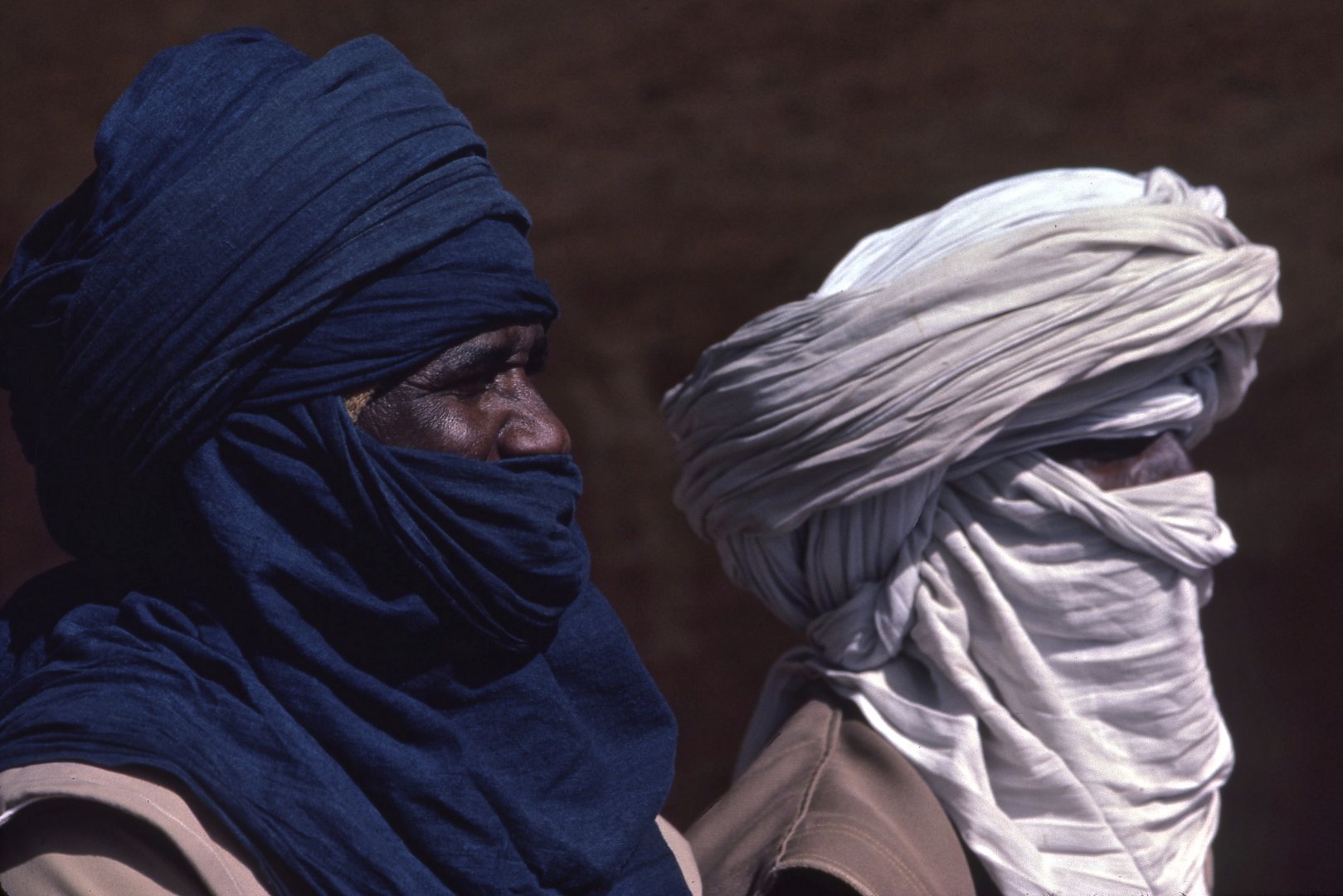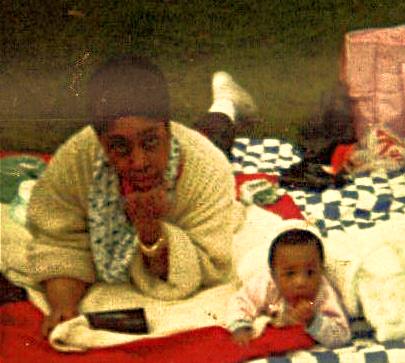
The bare minimum for a man to cover his ‘awra’ (‘nakedness’ according to Islamic law) is much less than that for women. Men must cover from their navel to their knees and women must cover all of themselves except their hands and face. That is the law, but the spirit of Islam dictates that male modesty in practice is relatively similar to female modesty. It’s always baffled me when the West criticizes the way Muslim women in a particular dress around the world (calling their style of dress ‘backward’ or ‘oppressive’), I think to myself But the men are dressed almost identically. In the Emirates where women dress in long flowing abayas, covering their heads and often covering their faces as well, men dress in long white thobes and also cover their heads. That is just one example among many, throughout the Muslim world the standard dress for both men and women has been long and lose clothing covering most of the body, some men —like the Tuareg (Mali), also cover their faces.
This is not the case, however, in the West. While many Muslim women retain their Islamic head covering and relatively modest clothing. Many Muslim men opt out of looking distinctly Muslim. They give no outward signal that they share the faith of their covered female counterparts, they instead look indistinguishable from non-Muslim men. And for the most part, as with women’s fashion, Western men’s fashion is immodest.
The typical style of men’s clothing is ‘separates’, i.e. pants and a shirt that give maybe 1-3 inches of space from the body, this being the case it often outlines the shape of a man’s body to the point that you could recognize the one who exercises regularly from one who doesn’t. On top of showcasing the outline of one’s body, exposure of one’s ‘nakedness’ is highly plausible. A typical shirt will reach slightly above the hip bone (far from the knees). Despite the very low requirement for the coverage of male ‘nakedness’, many men are barely fulfilling it, a man in the typical t-shirt and jeans outfit is likely to expose his back throughout the day —when he sits, when he bends down, and other minor movements. While men’s hair is by far not as attractive as women’s hair, traditionally it would be covered, instead, in our culture, Muslim men mimic their non-Muslim counterparts with the latest trendy haircut.
I’m by far not making a “what about men” argument as a retort to the excessive attention on the way women dress —women, in general, are more attractive than men and so maybe it is appropriate to spend more time discussing female modesty, its requirements, and its virtues, but that doesn’t excuse the overwhelming silence from many male shuyukh concerning male modesty. There are few exceptions, of all the lectures I’ve attended or listened to I’ve only heard male modesty discussed three times. Both Shaykh Rami Nsour and Imam Zaid have suggested that Muslim men wear kufis in solidarity with Muslim women. This is a valuable contribution to the relatively mute discussion on male modesty. As Muslim minorities, Muslim women often get the brunt of Anti-Muslim abuse (though on the opposite end it allows us to be on the frontline of dawa), if more Muslim men would boldly “dress like Muslims” maybe some of that negativity could fall onto them. But this should not be the only reason Muslim men consider dressing more modestly. Modest dress is a part of our faith and so it is their duty as much as it is ours to dress as modestly as possible.
The third exception to this nearly mute conversation on men’s modesty was during a three-day seminar with Sheikh Nuh Ha Meem Keller, may God preserve him. He dictates a particular code of dress for those who come to seek knowledge with him —both men and women. Once during a gathering, he told a man in the audience, who was in the process of asking him a question, that he ought to cover his head, then tossed him a kufi. I recall him saying that it did not befit the status of knowledge (that one should have their head uncovered).
What we wear contributes to our mood, says something about who we are, and advertises our values to the world —it doesn’t tell the whole story, but it says something, and both Muslim men and Muslim women need to be conscious of that. Umm Sahl, a shaykha in Jordan, once told us, “The dress of righteous people has always been the same”. Look across religions and cultures at priests, monks, nuns, Imams, and their followers, the dress is always the same —loose, long, covered and often unassuming. Modesty is not gender-specific, somewhere along the way Muslim men in the West got way too comfortable with barely fulfilling the minimum all while criticizing Muslim women —a bit of a ‘pot calling the kettle black’ scenario, this has been the case for far too long. While the conversation on women’s modesty should continue, male shuyukh need to take the time out to scold their brethren for opting out of modesty and taking the easy road of assimilation.
____________
Related:
- Holistic Modesty, https://bythefigandtheolive.com/holisticmodesty/
- What Prophet Yusuf can Teach the Modern Man, https://bythefigandtheolive.com/sexualmodesty/
- Spiritual Modesty, https://bythefigandtheolive.com/spiritualmodesty/
___
Consider subscribing to our newsletter Afterthoughts for more posts and our weekly newsletter, paid subscriptions to help to support our work. Subscribe for a free or paid subscription here. Also, be sure to join our Telegram and follow our Instagram.





MashaAllah on point ! Unfortunately most of our men have left the sunnah of modesty completely, I can’t agree with you more on this topic. Most Muslim men have left the head covering as something that is unnecessary. It’s hard to find Muslim men wearing long modest shirts and loose bottoms out here in the streets while a women with hijab and abaya can be easily spotted! it takes courage to be different from others. I believe it’s cowardly for men to dress in western outfits while they easily “fit in” and letting women take all the heat of the outside world.
Salaam sister,
Um, define the sunnah of modesty for men. The sunnah of modesty for men is nowhere near as strict as it is for women. Men do not have to observe thobe/shalwar kurta to the same fiqhi voracity that women are recommended to observe jilbab and or abaya and hijab.
And for men, a head covering being sunnah is not at all comparable to hijab being wajib for women. There were male sahaba who did not use to wear head coverings actively. What about them? Did they abandon the sunnah? Trying to even compare a kufi or turban to hijab is like comparing apples and oranges.
And I am not sure if you live in the west, but absolutely nowhere in the west have I encountered that men dress more immodestly than women do. Women easily outclass men in numbers when it comes to continual immodest dressing. Perhaps you are living in the Middle East, but in the west seeing a muslim woman at all wearing an abaya is a rarity. And also even if she wears a hijab, well if you look down she somehow decided that wearing tight jeans/yoga pants somehow did not contradict her hijab at all.
To start saying that men dress more immodestly than women is seriously ignoring a large chunk of reality on this issue. And If I may be honest, arguing for the sake of arguing.
Wasalam,
Well I assumed a Muslim would know what the definition of Sunnah is. To put it in simple terms it is what our prophet ﷺ did. So obviously “sunnah of modesty”is what our prophet ﷺ wore. Wearing the jilbab, izar (loin-wrap), thawb (long cloth),`imama , jubba, sirwal (baggy pants) is of the Prophet’s ﷺ Sunnah of dress.
While the secular minded reduce this aspect of Islam to an unimportant Sunnah. There is no such thing as an unimportant or unnecessary Sunnah. May Allah save us from committing such a slur against the Prophet as to make light of the Sunnah.
Last I checked t-shirts/polos and jeans are not even close to this description.Its immodest to say the least. And yes I’m speaking about the West, I live here and I see men getting away easy. As Sister Noor articulates it perfectly in her article.
Also, I don’t know which Sahaba are you talking about who would leave the Sunnah of prophet ﷺ. The Prophet, his Companions, the Successors, and all of the pious after their time and down to ours over the centuries have all worn the turban, the beard, and the loose long clothing that is associated with Islam. Clearly, today many western Muslim men have abandoned the sunnah of our beloved prophet ﷺ and the pious predecessors.
May Allah ﷻ guide us all.
Very relevant.. I feel like shouting at Men & this new trend of some of ‘Shaykh’s, Imams, who wanna look Westernized.
Muslim Men need to differentiate themselves and stand out just as much as Muslim Women. It’s embarrassing and we look so humiliated. Thanks you for writing this article, might give a slap and knock some sense into us Men.
Salaam! Thank you very much for this article, it’s very interesting. Do you think it is possible to find somewhere on the Internet the lectures on men’s modesty you’ve mentioned? Are those available in English or Arabic somewhere? Once again thank you. I’m going to be your devoted reader from now on 🙂
Arabic style clothing for sun bathed Middle East is suited for full covering against strong sun that causes skin cancer and deadly melanoma. Human habits and customs have developed in a helpful/useful way naturally, for example eating potatoes with meat is much better for digestion than bread. This applies to everything we do as life on earth goes on. I invite you to take a look at my humble FB.
Hi Anna! Found Sh. Rami Nsour’s here: https://www.youtube.com/watch?v=rCsB7-dPPkc